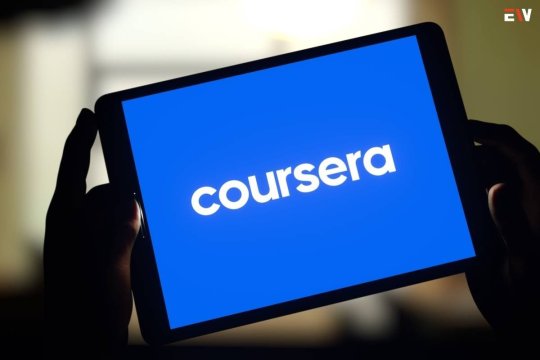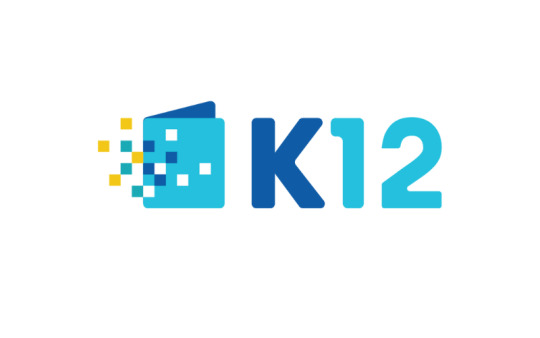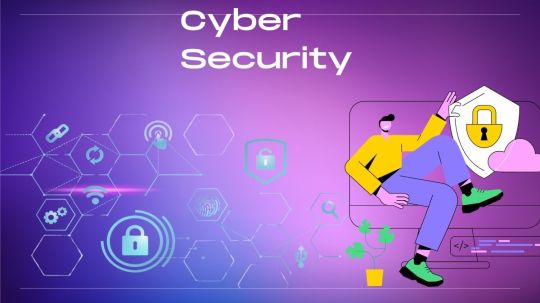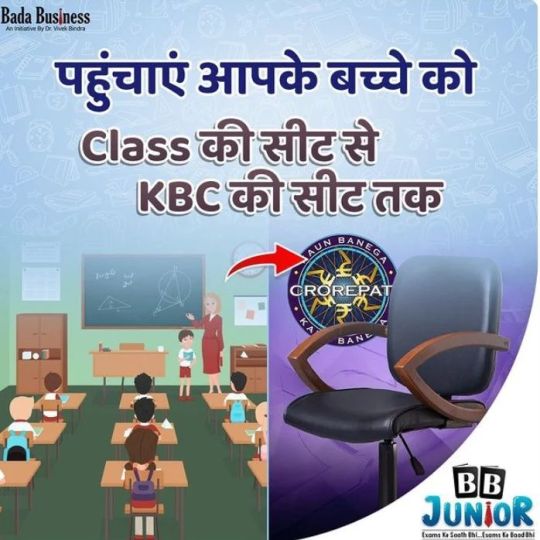#k12education
Text
How Gen AI and Extended reality Change learning in a decade

Extended reality Technology
It is not new to envision the future of education and the art of learning in general. The French artist Jean-Marc Côté imagined what education would look like in 2000, more than a century ago. The notion that literature might be electronically uploaded and processed straight into young people’s brains made many laugh when they saw his picture, but the idea would resurface in the science fiction film “The Matrix” from 1999.
Can art imitate life, though? In the upcoming years, will extended reality (XR) and artificial intelligence (AI) merge to create learning environments akin to those portrayed by Côté in “The Matrix”?
Just 16 billion, or 2%, of the $6.5 trillion K–12 education market is presently allocated to educational technology. Even so, a lot of teachers use technology to help their students reach their full potential. Even so, the majority of the time technology is only utilised to enhance passive teaching techniques (such as instruction via flat interactive panels, digital textbooks, online videos, and testing), which leads to minimal to nonexistent increase in academic achievements because of low student engagement. Active teaching techniques provided by AI and extended reality learning experiences, on the other hand, might be more beneficial to pupils.
The majority of extended reality experiences offered by content providers now are around STEM-based simulations, digital twins, virtual tours, and games. The convergence of AI modalities, however, presents us with a really transformative potential to fulfil the promise of “personalised” learning and produce quantifiable academic outcomes. These different generative AI applications will be put to use in the near future, automating them to provide real-time learning opportunities.
What can be done in the classroom today with generative AI?
With the help of generative AI, educators may design highly personalised classes. With minimal technical expertise, educators can rapidly produce dynamic movies to use as teaching aids through a series of manual procedures. Let’s discuss one such avenue for producing this kind of content:
Write a basic screenplay:
Request that Bard or ChatGPT compose a brief three- to five-minute video script that addresses the problem or instructive subject you want to tackle. Modify any content to meet quantifiable learning objectives.
Change to a script for a conversation:
To make the information produced by AI seem more real and conversational, copy and paste the original text into a programme like Quillbot.
Put together your audio story:
Paste the updated conversational text into Speechify or another application. You can choose from a variety of voices, such as Snoop Dogg and Gwenyth Paltrow, if you have their premium membership.
Make a video:
Using programmes like Movio or Invideo, upload your script and audio file, select the genre, and choose the delivery method (computer or the smartphone).
With the help of this technique and numerous others, teachers can add even more personalisation to their customised lectures. For instance, generative AI can produce lesson plans that highlight a student’s strengths and target their areas for growth. Teachers can free up time by training large language models to engage in discussions with children for targeted, on-demand support.
Though education has undoubtedly advanced in the current era thanks to technology, we primarily witness this in the form of computer and the tablet screens. Even with the familiar form of today’s 2D technology, children still find up staring at screens rather than engaging with their teachers and fellow students. Here’s where extended reality enters the picture and aims to close this gap. Combining generative AI with spatial computing capabilities to create an immersive learning environment that engages students with interactive and collaborative courses is another way that generative AI can be used in education.
Utilising artificial intelligence in extended reality learning
These days, the majority of extended reality learning opportunities take the form of walkthroughs or simulations, which are essentially an upgrade over standard lab and video materials. Most of them are singular experiences with distinct beginnings and ends. According to a PwC report, users were almost three times more confident in their ability to apply the skills they had gained from their extended reality training, and even with extended reality learning as it currently exists, learners absorbed information four times faster than in a typical classroom.
What if a real-time platform was equipped with the greatest generative AI techniques? I think the end product is a transformative tool that enables each learner to reach their full potential. Let’s examine a few ways that this idea of (Ai)daptive extended reality pronounced Ai-daptive can produce significant outcomes:
Introduces learning at the student’s present level:
Using (Ai)daptive XR to take into account the student’s actual abilities. Content is presented in that language right away if they feel more at ease doing so (thereby getting around a common challenge faced by ELL students nowadays).
Personalisation:
(Ai)daptive XR can provide actual personalisation, yet current attempts at personalisation frequently amount to nothing more than differentiated learning. The programme can quickly identify strengths and weaknesses and modify the learning objectives based on the first few difficulties in a simulation. For instance, if the learner finds it difficult to perform complex multiplication and the simulation’s objective is to measure the volume of spaces, the student will usually fail the simulation with minimal progress.
(Ai)daptive XR may identify the gap’s underlying cause fast and modify the learning objectives to assist the child in completing the prerequisites before reaching the original learning aim. On the basis of the identified learning obstacles, a new extended reality simulation is developed. Instead of letting these weaknesses build up and lead to the child’s future academic failure, the learner can then be better equipped to successfully achieve the objectives on a subsequent simulation.
Making learning relevant:
When students don’t recognise the relevance of the material, most classroom subjects fail to “engage” them. However, (Ai)daptive extended reality content can be swiftly modified to offer the material in a theme that is both effective and meaningful to the student by taking into account the student’s personal passion. For a young child who dreams of becoming a fashion designer, for instance, a simulation measuring an area of farmland may be instantly updated in real-time to measure an area of cloth. The result of that simulation may alter significantly as a result of that swift adjustment.
User-responsive:
(Ai)daptive XR is capable of responding to voice input from the user(s) in their native language, instead of just judging performance based on where the user “clicks” with a hand controller. Though conversational speech from the user will allow for more realistic interaction and enable the system to address inquiries or concerns, current extended reality simulations are restricted in their ability to gather user response.
Real-time feedback:
Learners can reinforce their mastery of earlier topics through simulations, in addition to seeing the actual ramifications of their decisions. Teachers frequently don’t have enough time in typical classroom settings to administer evaluations to their students. However, real-time natural assessments can be carried out in a stress-free setting several times a day with extended reality.
Collaboration:
Since it is simpler to produce individual-based content, few extended reality learning simulations permit numerous students to collaborate on a task. When a group of students collaborates, they can offer difficulties and novel scenarios, and (Ai)daptive XR can evaluate these and modify the content presented based on the group’s behaviour in the simulation.
Benefits of Extended Reality
With (Ai)daptive extended reality, the possibilities are virtually limitless
In the upcoming ten years, the development of instructional extended reality with AI will be a fantastic and welcome addition to EdTech. It is an opportunity to provide every child in every community with truly customised training. Considerable debates in a number of areas, such as governance, privacy, connectivity, and equity, will be necessary in light of these changes.
AI will permeate every aspect of our everyday lives as examples of generative Artificial Intelligence continue to be adopted by the general public over the course of the next ten years. Qualcomm Technologies, with its expertise in extended reality processing and AI, is at a crossroads in this industry. Seeing this through to completion throughout my lifetime is my dream.
Read more on govindhteh.com
#GenAI#ExtendedReality#k12education#digitaltwins#GenerativeAIApplications#chatgpt#smartphone#news#technews#technology#technologynews#technologytrends#govindhtech
0 notes
Text
Navigating the World of Online Learning Platforms: A Comprehensive Guide

In recent years, the popularity of online learning platforms has skyrocketed, offering unparalleled opportunities for individuals to expand their knowledge and skills from the comfort of their own homes. Whether you’re looking to acquire new expertise, enhance your career prospects, or simply pursue your passion, online platforms provide a diverse array of courses and resources to suit every learner’s needs. In this comprehensive guide, we’ll explore the ins and outs of online learning platforms, empowering you to make informed decisions and embark on your learning journey with confidence.
The Rise of Online Learning Platforms
1. Accessibility and Convenience
Online platforms eliminate the barriers of time and location, allowing learners to access educational content anytime, anywhere. Whether you’re a busy professional, a stay-at-home parent, or a lifelong learner, the flexibility of online learning enables you to pursue your educational goals on your own terms.
2. Diverse Course Offerings
From technology and business to arts and humanities, online learning platforms offer a vast selection of courses covering virtually every subject imaginable. Whether you’re interested in mastering a new programming language, honing your photography skills, or delving into the intricacies of philosophy, there’s a course tailored to your interests and aspirations.
3. Interactive Learning Experiences
Many online learning platforms leverage interactive features such as video lectures, quizzes, assignments, and discussion forums to engage learners and foster active participation. Through hands-on projects, collaborative activities, and peer feedback, online learners can apply theoretical knowledge to real-world scenarios and enhance their understanding of the subject matter.
Choosing the Right Online Learning Platform
1. Course Quality and Reputation
Evaluate the quality of courses offered by different online platforms by researching instructor credentials, course reviews, and student testimonials. Choose platforms with reputable instructors and rigorous curriculum standards to ensure a high-quality learning experience.
2. Flexibility and Accessibility
Consider the flexibility and accessibility features offered by online learning platforms, such as self-paced courses, mobile compatibility, and offline access to course materials. Choose platforms that align with your learning preferences and lifestyle constraints to maximize your chances of success.
3. Learning Resources and Support

Assess the availability of supplementary learning resources and support services provided by online learning platforms, such as textbooks, study guides, and instructor assistance. Opt for platforms that offer comprehensive support to help you overcome challenges and achieve your learning goals effectively.
Popular Online Learning Platforms

1. Coursera
Coursera offers a wide range of courses and specializations developed by top universities and industry leaders. With flexible scheduling options and peer-reviewed assignments, Coursera provides a robust learning platform for individuals seeking to acquire new skills and advance their careers.
2. Udemy
https://enterprisewired.com/wp-content/uploads/2024/03/1.4-Udemy-source-Course-Creators-Academy-OnlineCourseHost.com_.jpg
3. LinkedIn Learning
Formerly known as Lynda.com, LinkedIn Learning offers a vast library of video tutorials and courses covering business, technology, creative skills, and more. With personalized recommendations and integration with LinkedIn profiles, LinkedIn Learning provides a seamless learning experience for professionals looking to enhance their skills and stay competitive in the job market.
4. Khan Academy
https://enterprisewired.com/wp-content/uploads/2024/03/1.6-Khan-Academy-source-Giant-Freakin-Robot.jpg
Conclusion
Online learning platforms have revolutionized the way we acquire knowledge and skills, offering unprecedented opportunities for lifelong learning and personal growth. By leveraging the accessibility, diversity, and interactivity of online courses, individuals can unlock their full potential and pursue their passions with greater flexibility and convenience than ever before.
Whether you’re looking to advance your career, explore new interests, or simply expand your horizons, online learning provides a wealth of resources and opportunities to help you achieve your goals. With the right approach and the right platform, the possibilities for learning and growth are limitless.
Also Read: Empowering Education: Exploring the Best Free Learning Management Systems
#EducationRevolution#onlinelearning#futureoflearning#edtech#DigitalTransformation#k12onlineschools#k12education#education
0 notes
Text

K12 Total Review 2023 – A Complete And In-Depth Look At K12
Unlocking the full picture of K12 education in 2023! 📚 Read our comprehensive review of K12 Total, exploring every facet for a complete understanding. Knowledge is power! 💡
0 notes
Text

Ready your child for a great school year.
Start off with BIZ KIDZ BOOKS & GEAR!
ON SALE NOW... don't delay!
Visit https://deeclareit.com and order TODAY.
#Back2School#back2school#Back2School2022#backtoschool#backtoschoolsale#backtoschool2022#K12#k12schools#k12education#homeschooling#homeschool#homeschoollife#homeschoolmom#homeschoolers#homeschoolfamily#homeschoolcommunity#homeschoolpreschool#unschoolers#unschoollife#unschooler#unschoolingfamily#unschoolingmom#outthebox#thinkoutsidethebox#thinkoutsideofthebox
0 notes
Photo

Exam NEET कि हो या IIT, BB junior के पास है सभी quality,,, More info 👇👇 Call 📞- 8459538949 . . #bbjunior #bbjuniorschool #k12 #k12education #k12learn #learn #learnenglish #technology #qualitylearning #learnhindi #learnmaths #othersubjects #allsubjects #badabusiness #drvivekbindra #skills #communication #communicationskills #21century #21centuryschools #publicschool #udhanpublicschool #entrepreneurship #leadership #health #wealth #networth #youtuber #consultantalpana #codingtechnology https://www.instagram.com/p/Ceuhu_Hv0HN/?igshid=NGJjMDIxMWI=
#bbjunior#bbjuniorschool#k12#k12education#k12learn#learn#learnenglish#technology#qualitylearning#learnhindi#learnmaths#othersubjects#allsubjects#badabusiness#drvivekbindra#skills#communication#communicationskills#21century#21centuryschools#publicschool#udhanpublicschool#entrepreneurship#leadership#health#wealth#networth#youtuber#consultantalpana#codingtechnology
0 notes
Text
Revolutionizing K-12 Education with AI-Powered Content Distribution
Are you ready to unlock the full potential of personalized education? Dive into the future of K-12 learning with AI-powered content distribution! 🚀✨
In our latest blog post on Magic Box, we delve deep into the transformative power of AI in education. Discover how AI algorithms are reshaping the way content is distributed, making learning experiences more tailored, engaging, and effective for students of all ages.
🧠 Personalized Learning: Say goodbye to one-size-fits-all education! AI algorithms analyze student data to understand individual learning styles, preferences, and strengths, allowing educators to deliver content that resonates with each student on a personal level.
📚 Curriculum Enhancement: With AI-powered content distribution, educators can easily supplement traditional curriculum with a vast array of digital resources, including interactive simulations, virtual labs, and multimedia content, enriching the learning experience and catering to diverse learning needs.
🔍 Data-Driven Insights: Harness the power of data analytics to gain valuable insights into student progress, engagement levels, and comprehension. By tracking student interactions with content in real-time, educators can identify areas of strength and areas needing improvement, enabling targeted intervention and support.
🌐 Anywhere, Anytime Learning: Whether in the classroom, at home, or on the go, AI-powered content distribution ensures that learning never stops. With cloud-based accessibility, students can access personalized learning materials anytime, anywhere, fostering a culture of continuous learning and empowerment.
Join us on the journey to revolutionize K-12 education with AI-powered content distribution! Read the full blog post on Magic Box and embark on the path towards a future where every student receives the tailored education they deserve. Together, let's shape the future of learning! 🌟
Read the full article here
#Education #EdTech #AI #Personalized Learning #K12Education #Future of Learning #Magic Box #Blog Post #Medium
1 note
·
View note
Photo

A lot of people are creating and sharing online flashcards for free at Munkle.it. It's one of the fasted ways to study, and people can team up to get better grades on their next tests by using Munkle. #study #flashcards #languagestudy #languageschool #k12education
https://blog.munkle.it/create-and-share-online-flashcards-for-free/
#study#study tips#flashcards#flash cards#language#language study#languageschool#k 12 education#teacher#teacher tips
0 notes
Text
Tweeted
Participants needed for online survey! Topic: "K-12 Teachers' Experiences of Storytelling in the Metaverse" https://t.co/QfeH0b5jkB via @SurveyCircle #teachers #K12Education #storytelling #metaverse #phd #research #PhdStudy #survey #surveycircle https://t.co/6mNa4vlOcd
— Daily Research @SurveyCircle (@daily_research) Jul 19, 2022
0 notes
Photo


DR KALAM'S MIGHTY MINDS SCHOLARSHIP PROGRAM FOR K-12 STUDENTS!!
REGISTER HERE: https://mightyme.in/
WIN FROM THE TOTAL SCHOLARSHIP PRIZE MONEY OF INR 20,00,000/- !! UP TO 1000 WINNERS !!
#mightyminds#worldstudentday#abdulkalam#scholarshipprogram#scholarship#covid orphans#k12schools#k12education#students#school#education#skillindia#icseschools#cbseschools#olympiad#mighty me#chitkara university#chitkara international school#assocham#MyAnatomy Integration Pvt Ltd#scholarshipopportunities#schloarships2021
2 notes
·
View notes
Photo

Last Week deal! 🥳🥳🥳 Whether you are short on credits or simply looking to work ahead, WorldEd can help! We are an online accredited school that offers open enrollment for all courses. We provide comprehensive and flexible options to meet your needs. You can enroll anytime, anywhere, and even get started today! ➡️https://www.wk12.org/summer-school #schoollife #highschooldays #studentslife #onlineschool #schooldays #highschoolsenior #k12 #schools #schooltime #highschoolart #internationalstudents #schoolday #highschoollife #WorldEd #virtualschool #summerschool #k12education #homeschooling #school2021 #highschool #muddleschool #sat #act #college #digitalschool #virtualacademy #diploma #school #collegeadmission (at United States of America) https://www.instagram.com/p/CDPzoh5AIPi/?igshid=1mpj2d1xt1lgp
#schoollife#highschooldays#studentslife#onlineschool#schooldays#highschoolsenior#k12#schools#schooltime#highschoolart#internationalstudents#schoolday#highschoollife#worlded#virtualschool#summerschool#k12education#homeschooling#school2021#highschool#muddleschool#sat#act#college#digitalschool#virtualacademy#diploma#school#collegeadmission
1 note
·
View note
Text
Bulletproofing Education: Data Security for K12 IT

K12 IT
Cyberattack Targets of Choice
K–12 institutions are attractive targets for cybercriminals because they provide a threefold advantage: Government-funded schools are perceived as more likely to pay the ransom, breaches are well-publicized and elicit strong emotional reactions from parents and the community, and districts frequently use outdated technology that increases their susceptibility to attacks.
Hernan London, Chief Technology and Innovation Strategist for Education at Dell Technologies, stated, “they conducted a survey of K12 IT decision makers with their partners and found that 90% of respondents said modernizing IT is vital to their institution’s future, but just 15% gave their current efforts a ‘A’ grade.” “Improving cybersecurity is a major factor in modernization.”
According to the same survey, four out of five IT decision-makers believe that their organizations are at danger because of outdated technologies.
K-12 cybersecurity
Cyber audits and cyber threat hunting can be used to safeguard K–12 data and systems.
The education sector has the highest rate of ransomware assaults, yet no field is immune to cybercriminals and ransomware attacks. In the last five years, there have been over 380 recorded ransomware attacks on educational institutions, resulting in an estimated $53 billion in lost productivity and the compromise of 6.7 million personal records. After a ransomware attack, the outage typically lasts 11.6 days. For school districts, that is more than two weeks of lost instructional time.
In a recent webinar on modernizing technology in K–12 schools, Chris Woehl, Executive Director of Technology and Information Services for the Lake Travis Independent School District (ISD) in Texas, stated.
CISA K–12 Cybersecurity
Federal Assistance
Additionally, K–12 educational software providers have been requested by CISA to make a “voluntary pledge” to concentrate on developing products that priorities cybersecurity in their design. The agreement has been made by six of the biggest tech giants in the education space. An initiative of $200 million will be initiated by the Federal Communications Commission to strengthen the defense of K–12 infrastructure against online attacks.
“We must survey, manage, detect, and respond to cyber threats,” according to Woehl, of Lake Travis ISD. Thus, they are gathering and logging their telemetry data, whether it comes from an appliance, a piece of software, or software-as-a-service. In order to safeguard our systems and the school community, we must do internal threat hunting and cyber audits.
Cybersecurity Balance in a World of Learn From Anywhere
K12 IT decision-makers in the Dell Technologies poll identified threat detection and response as well as employee, student, and community data protection as their top cybersecurity objectives. Nonetheless, as staff members and students connect and learn remotely from any device, the security landscape has become increasingly complex. Schools are forced to strike a compromise between enhancing cybersecurity and accessibility due to the evolving threat landscape.
London stated, “This includes enabling Zero-Trust security techniques like multifactor authentication that permit access to trusted individuals but preventing adversaries from doing the same.
In the case of an assault, modern infrastructures also facilitate disaster recovery efforts, enabling schools to bounce back fast with little disruption to daily operations and student learning.
Putting Money Into K–12 Cybersecurity
According to a Dell Technologies survey, K12 IT leaders’ biggest obstacle to updating their infrastructure is a lack of funds. Another major problem is finding technicians with cybersecurity expertise.
According to Woehl, “school districts are competing with the private sector for cybersecurity talent.” “A district’s capacity to identify and neutralize threats is significantly impacted by inadequate staffing.”
Spending money on training is beneficial. Districts have concentrated on educating staff members to identify typical cybersecurity attack techniques, such phishing, in order to thwart attacks at the point of access.
The upcoming generation of technologists is being trained via other initiatives, such the Dell Student Tech Crew. Students in high school can receive training from the programmed to become help desk technicians, who can assist school technology teams with requests for district technology.
High school students who receive actual computer training benefit from it, and district IT personnel may focus more on cybersecurity than tech assistance.
IIJA funds infrastructure modernization. A poll of school K12 IT leaders found that 74% planned to enhance their IT infrastructure with IIJA funds.
London stated, “Risk hasn’t been a deciding factor in K12 IT investments up until now.” However, it is now. Investment is being driven by outside forces. For instance, K–12 districts are subject to an outside force and must obtain cybersecurity insurance to safeguard themselves in the event of an attack. If their security posture and risk are sufficient, the cyber insurance providers want to know. They are not eligible for insurance if it isn’t.
London points out that in order to make up for shortages in expertise or modernization funding, districts can collaborate with tech firms. Even in a context with limited resources, cash-strapped districts can boost cybersecurity by outsourcing skills or switching to managed services, the speaker added.
Visit their K12 IT Solutions page to find out more about how Dell Technologies can assist K–12 districts with bolstering contemporary security measures and updating their infrastructure to promote safe learning environments.
K–12 Teaching Resources
Recognize your route to student-centered transformation in grades K–12.
Students now have the opportunity to learn in highly personalized ways thanks to the digital world. The learning experiences can motivate all kids when educators and students collaborate to create K–12 curriculum and use technology in meaningful ways. With a committed group of former teachers with deep experience using technology successfully, Dell Technologies is in a unique position to assist districts in creating student-centric learning models that will increase students’ preparedness for the future.
Ensure that access is always available.
Modern computers intended for educational use.
Techniques for mobility in distant education.
Accessories for learning to keep learning efficiently.
Create engaging learning environments
A range of activities, group sizes, locations, and instructional objectives are made possible by flexible rooms, equipment, and IT.
Every classroom should have educational technology.
Furniture that is modular to support modern education.
Desktop applications for shared spaces and specialised classes.
Modify instruction to provide students greater autonomy.
Professional learning assists
Professional learning assists in altering culture, mindset, and teaching strategies to support particular K–12 learning outcomes.
Professional educational services to meet district goals.
Using a teacher’s qualification to showcase achievements.
Virtual courses provide flexible delivery options.
Safeguard students and data
Find the perfect balance between data security and digital access with the help of Dell security solutions.
Protect student data.
Prevent hazards from disrupting schooling.
Update the K–12 data infrastructure and take precautions to secure data wherever it goes.
In order to increase organizational agility, predictability, and efficiency, upgrade your data infrastructure.
K12 How Does It Work
K–12 Education Strategists
K12 IT made easy by the management, protection, and defense of a unified infrastructure for data.
Options for networking in the modern data centre.
Get to know their experts in educational approach.
Their K–12 Education Strategists work with school districts to create creative models that support student-centered learning.
Develop instructional strategies that will get kids ready for the future.
Make preparations for professional development to help teachers.
Financing for Tech-Friendly K–12 Organizations
Find and secure financing to bring your ideas to life. Using COVID-19 relief and recovery money and annual technology grants for public sector organizations is explained in their finance guide.
K–12 districts across the country are updating their classrooms to enhance learning for all children.
K12 how much does it cost?
Whether you’re considering a private or public online education programme will determine how much K12 costs.
Read more on Govindhtech.com
#govindhtech#cybersecurity#news#technews#K12#k12education#K12Construction#K12IT#CISA#technologynews#technologytrends
0 notes
Text
The Evolution of Education: Exploring the Benefits and Challenges of K-12 Online Schools

In the rapidly advancing digital age, education is undergoing a profound transformation as online learning platforms become increasingly prevalent. One significant facet of this transformation is the rise of K-12 online schools, which cater to students from kindergarten to 12th grade. This article delves into the world of K-12 online education, examining its benefits, challenges, and the impact it has on the traditional educational landscape.
The Rise of K-12 Online Schools
K-12 online schools have gained momentum as a flexible and accessible alternative to traditional brick-and-mortar institutions. This educational model allows students to access a comprehensive curriculum from the comfort of their homes, enabling personalized learning experiences tailored to individual needs and preferences.
1. Accessibility and Flexibility
One of the key advantages of K-12 online schools is the accessibility they provide to a diverse range of students. Geographical constraints no longer limit educational opportunities, as students can participate in classes from anywhere with an internet connection. This is particularly beneficial for students in rural areas or those facing physical limitations that make attending traditional schools challenging.
Additionally, the flexibility of online learning accommodates diverse learning styles and individual paces. Students can progress through the curriculum at their own speed, allowing for a more personalized and adaptive educational experience. This flexibility is especially valuable for students who require extra time for certain subjects or wish to accelerate their learning in others.
2. Customized Learning Environments

K-12 online schools offer a dynamic and interactive learning environment that can be customized to suit individual learning styles. The incorporation of multimedia resources, interactive lessons, and real-world applications enhances engagement and deepens understanding. This personalized approach empowers students to take ownership of their education, fostering a sense of responsibility and self-motivation.
Teachers in online schools often have the flexibility to tailor their instruction to the needs of each student. This adaptability allows for more one-on-one interaction, addressing specific challenges and providing additional support where necessary. The result is a more student-centric educational experience that acknowledges and accommodates diverse learning needs.
3. Diverse Course Offerings
K-12 online schools often provide a broader range of courses than traditional schools. Specialized or advanced courses that might be unavailable in certain geographical locations become accessible to students, allowing them to explore their interests and pursue areas of study that align with their future goals. This diversity contributes to a more well-rounded education that prepares students for a variety of career paths.
Challenges of K-12 Online Schools
While K-12 online schools offer numerous advantages, they also face certain challenges that need to be addressed for the continued improvement of online education.
1. Digital Divide
One of the most pressing challenges is the digital divide, which refers to the gap in access to technology and the internet. Not all students have equal access to reliable internet connections, computers, or other necessary devices. This disparity can exacerbate educational inequalities, disadvantaging students who lack the resources to fully participate in online learning.
Efforts to bridge the digital divide include initiatives to provide subsidized or free devices and internet access to underserved communities. However, addressing this challenge requires ongoing commitment and collaboration between educational institutions, policymakers, and technology providers.
2. Socialization and Peer Interaction

Traditional schools play a crucial role in the social development of students, providing opportunities for face-to-face interaction, collaboration, and the development of interpersonal skills. K-12 online schools, while offering virtual communication tools, may struggle to replicate the same level of socialization found in physical classrooms.
To address this challenge, online schools often incorporate virtual extracurricular activities, discussion forums, and collaborative projects to foster a sense of community. However, finding effective ways to promote socialization in the online learning environment remains an ongoing concern.
3. Teacher Preparedness
Successful implementation of K-12 online education requires adequately trained and prepared teachers. Educators must be proficient in utilizing digital tools, adapting their teaching methods to an online setting, and providing meaningful feedback through virtual platforms. Insufficient training can hinder the effectiveness of online instruction and impact the overall quality of education.
Continuous professional development programs and support structures are essential to equip teachers with the skills and knowledge necessary for effective online teaching. Collaboration between educational institutions and ed-tech companies can facilitate the development of robust training programs tailored to the unique demands of online education.
Impact on Traditional Education
The rise of K-12 online schools has led to a reevaluation of traditional educational models, prompting institutions to incorporate digital elements into their practices. This hybrid approach combines the strengths of both traditional and online education, offering students a more versatile and adaptable learning experience.
1. Blended Learning Models
Blended learning, a combination of traditional classroom instruction and online components, has become increasingly popular. This model allows students to benefit from face-to-face interactions with teachers and peers while also accessing online resources for independent study. Blended learning caters to diverse learning styles and provides a more flexible educational experience.
Educational institutions adopting blended learning models often leverage online platforms for homework assignments, collaborative projects, and supplementary materials. This integration of technology enhances the overall learning experience and better prepares students for the digital demands of the modern workforce.
2. Enhanced Educational Technology

The growth of K-12 online schools has driven advancements in educational technology. Traditional schools are increasingly incorporating interactive whiteboards, virtual reality simulations, and other digital tools to enhance classroom instruction. These technologies not only make learning more engaging but also provide teachers with valuable tools for assessing student progress and tailoring instruction to individual needs.
The infusion of educational technology into traditional classrooms reflects a recognition of the benefits offered by online education. It also underscores the importance of preparing students for a technologically driven future by integrating digital literacy skills into the curriculum.
Conclusion
K-12 online schools represent a significant evolution in education, offering accessibility, flexibility, and personalized learning experiences. While challenges such as the digital divide and the need for teacher preparedness persist, ongoing efforts to address these issues are essential for the continued success of online education.
The impact of K-12 online schools extends beyond their virtual classrooms, influencing traditional education models and inspiring the adoption of blended learning approaches. As we navigate the evolving landscape of education, it is crucial to prioritize inclusivity, technological literacy, and the overall well-being of students to ensure a balanced and effective educational system for the future.
#EducationRevolution#onlinelearning#futureoflearning#edtech#DigitalTransformation#k12onlineschools#k12education#education
0 notes
Video
youtube
BROBOT Mini Industrial Robot Arm
#k12education#robotarm#steameducation#industry4_0#roboticcollaborative#cobot#educational robots#stem
1 note
·
View note
Text
I'm going to become a successful, happy adult and then preach about all the school I missed and how, even though I developed a penchant for skipping, I turned out just as intelligent and capable of critical thinking as everyone else.
Maybe it'll prove a point about our public school systems. Maybe it'll just make all the staff feel really silly. Either way, it's a win.
#american education system#k12education#k12 education#k12#tagging a lot so i can find it again in 5-10 years#public school#school#high school
11 notes
·
View notes
Photo

पहुंचाए अपने बच्चो को class sheet से KBC कि sheet तक,,,all board solutions, BB junior best learning platform k12 More information 👇👇 Call 📞- 8459538949 . . @consultantalpana . . #bbjunior #badabusinessjunior #k12 #k12education #k12learn #k12classrooms #publicshool #kbc #kbclearning #udhanpublicschool #bestlearning #skills #21century #communication #devolpment #allskills #learnmore #boardexam #concept #conceptclear #student #allstudents #entrepreneurship #codingtechnology #knowledge #technology #badabuainess #drvivekbindra #consultantalpana #instalearn https://www.instagram.com/p/Cep_MmHPRIJ/?igshid=NGJjMDIxMWI=
#bbjunior#badabusinessjunior#k12#k12education#k12learn#k12classrooms#publicshool#kbc#kbclearning#udhanpublicschool#bestlearning#skills#21century#communication#devolpment#allskills#learnmore#boardexam#concept#conceptclear#student#allstudents#entrepreneurship#codingtechnology#knowledge#technology#badabuainess#drvivekbindra#consultantalpana#instalearn
0 notes
Text

2 notes
·
View notes